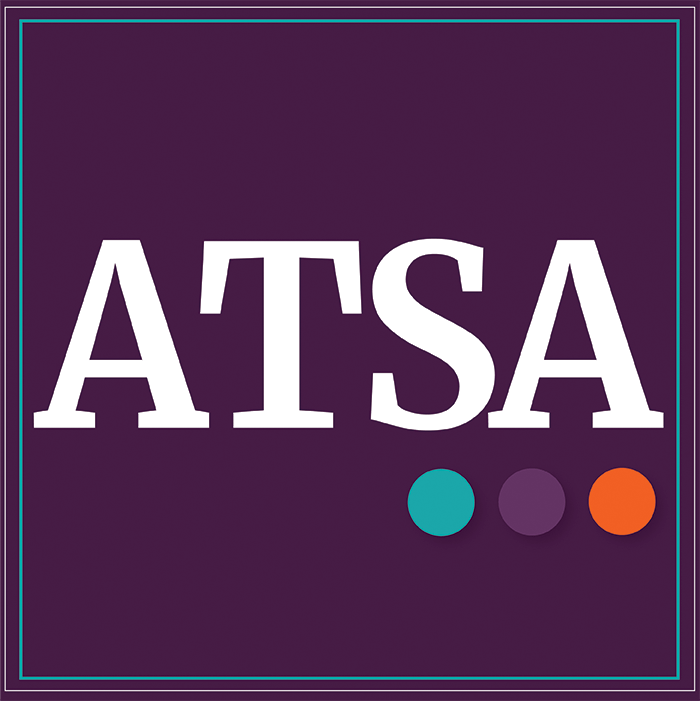ATSA's Mission

"Creating a world where ending sexual harm is a shared responsibility and an achievable goal. ATSA champions research and treatment, informs public policy, and advocates for best practice. Together, we can shift narratives on preventing sexual abuse perpetration."
The Association for the Treatment and Prevention of Sexual Abuse is an international, multi-disciplinary organization dedicated to preventing sexual abuse. ATSA promotes sound research, effective evidence-based practice, informed public policy, and collaborative community strategies that lead to the effective assessment, treatment, and management of individuals who have sexually abused or are at risk to abuse.
ATSA's members include treatment providers, researchers and educators, victims' rights advocates, law enforcement and court officials, and representatives of many other stakeholder groups. The core values that guide ATSA are professional excellence, community safety, collaboration, and advocacy. ATSA promotes the philosophy that empirically based assessment, practice, management, and policies enhance community safety, reduce sexual recidivism, protect victims and vulnerable populations, transform the lives of those caught in the web of sexual violence, and illuminate paths to prevent sexual abuse.
ATSA Staff
AMBER SCHROEDER
Executive Director
Email Amber
ANISS BENELMOUFFOK, IOM
Director, Public Affairs
Email Aniss
JANE ALGIERS
Manager, Marketing &
Education
Email Jane
JESSICA YIP
Manager, Conference &
Chapter Relations
Email Jessica
CHRISTY COENEN
Coordinator, Membership &
Events
Email Christy
ATSA History
ATSA’s origins date back to the early 1980s, when a group of Oregon treatment providers, researchers, and other practitioners began meeting each month to discuss assessment methods and treatment options for sexually aggressive adults in Oregon State Hospital and other institutions. From these monthly lunch meetings emerged a shared desire to develop practice standards for evaluating and treating sexual abusers. At that time, no such standards existed.
In late 1984, the group held a free workshop at Oregon State Hospital attended by practitioners from throughout the Pacific Northwest states and the Western Canadian provinces. The focus of the workshop was the use of plethysmographs. That conference led to the creation of an organization called the Association for the Behavioral Treatment of Sexual Aggressives. The group began producing a newsletter for members called the ABTSA Professional Forum.
Incorporation papers were filed in 1985, and the new association created a Board of Directors and standing committees. One of the first actions of ABTSA was to develop a code of ethics and conduct for treatment providers. To more accurately reflect the organization’s focus, ABTSA’s name was changed the following April to the Association for the Behavioral Treatment of Sexual Abusers.
ABTSA held its first conference in 1987 in Newport, Oregon. Subsequent conferences were held throughout the United States and Canada. As interest in the organization grew, so did conference attendance and membership. This growth expanded ABTSA’s focus to include research and treatment innovation. As a result, the word “Behavioral” was dropped from the association’s name in the early 1990s to more accurately represent ATSA’s broadening scope of inquiry.
As the Association for the Treatment of Sexual Abusers, ATSA grew into an international organization of more than 3,000 members representing approximately 20 countries. ATSA sets standards and practice guidelines for treatment providers; produces a code of ethics for practitioners; produces the highly ranked peer-reviewed journal, Sexual Abuse; hosts the world’s largest annual conference and leading educational venue for professionals working on issues related to the treatment, management, and research of sexual abuse; and provides Continuing Education classes to help practitioners gain and maintain up-to-date information on current research and evidence-based best practices.
In 2022, the Board of Directors recommended the organization expand their name to more accurately reflect the role members currently have in preventing sexual abuse and to recognize the diversity of professions ATSA members work (and study) in. The membership overwhelmingly voted to support the recommendation, and ATSA adopted its current name as The Association for the Treatment and Prevention of Sexual Abuse.
The ATSA Board of Directors will be developing an updated strategic plan in 2024.
